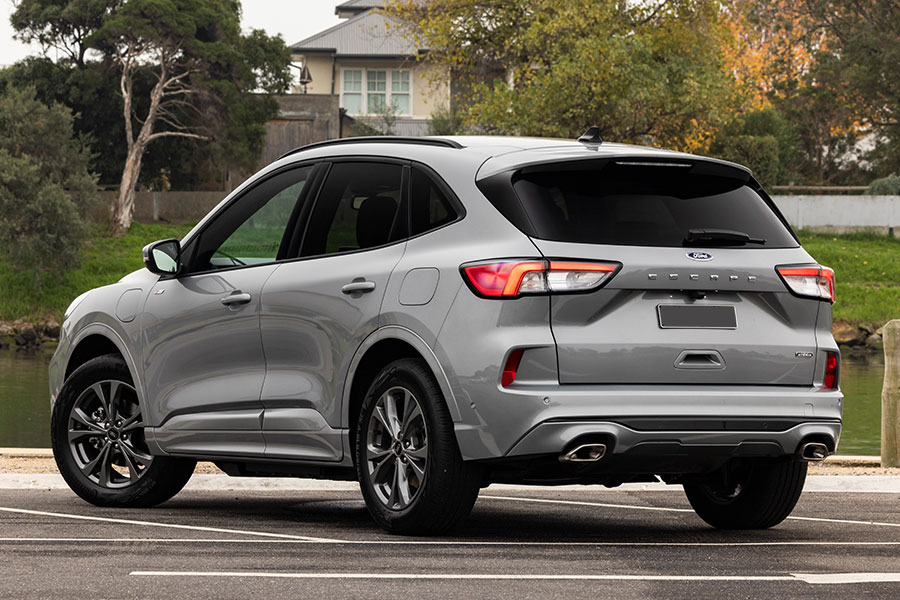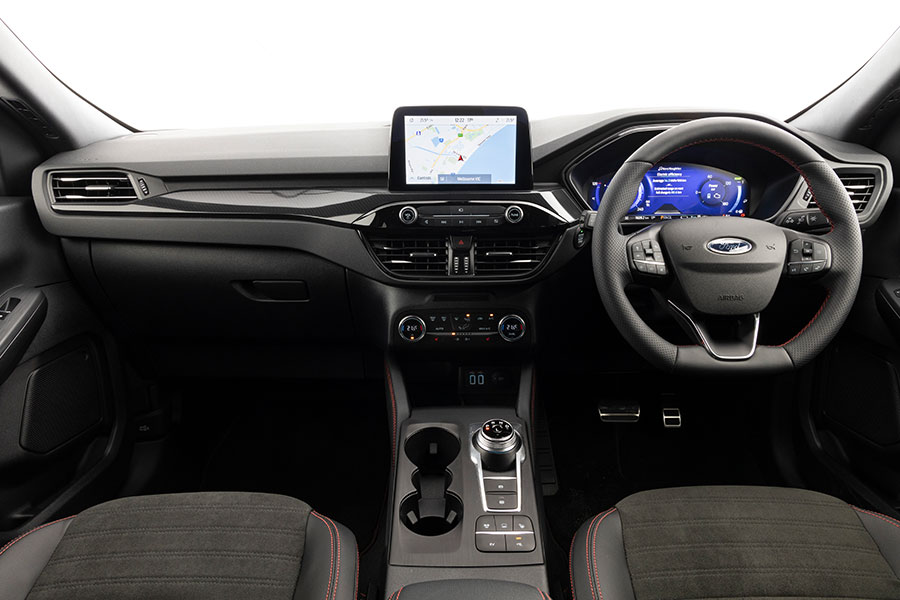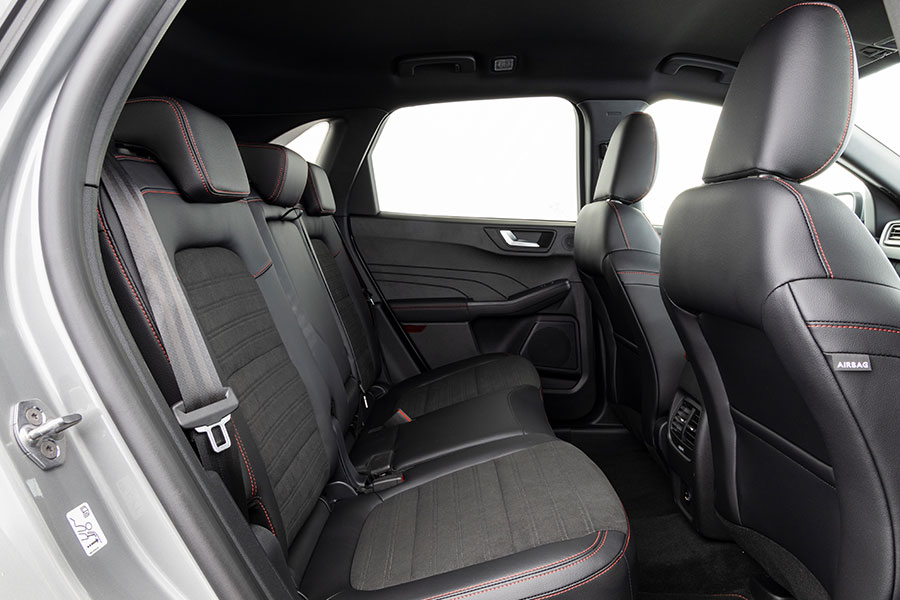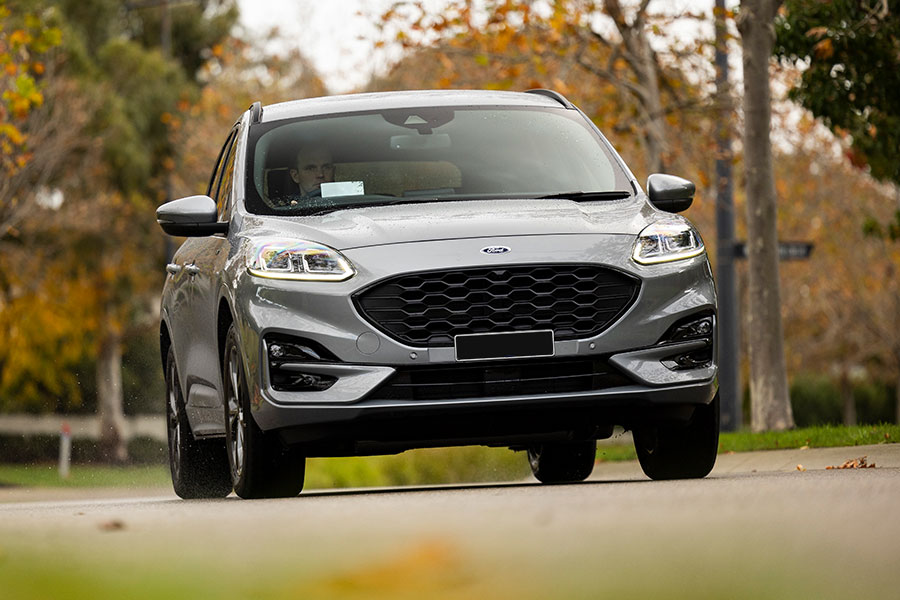Whether you’re ready to get started or would like to know more, we’re here to help.
By Scott Newman, carsales.com.au
Ford is a charging headfirst into the future of electric motoring in major markets such as North America, Europe and China with groundbreaking vehicles like the F-150 Lightning pick-up and Mustang Mach-E crossover. But the local arm of the blue oval has only just started to dip its toes in the water with the 2022 Ford Escape PHEV – or plug-in hybrid electric vehicle. It’s the Blue Oval brand’s first foray into electrification in Australia and gives the family-friendly SUV a useful zero emission driving range. But is it enough?
Moving on up
Let’s get straight to the punch; saving fuel – and the planet – will cost you a lot of money. The Ford Escape PHEV is $15,000 more expensive than the front-wheel drive ST-Line model on which it is based. That’s a 40 per cent price premium. Ouch!
Initially priced at $53,440 plus on-road costs when it launched in Australia earlier this year it has already copped a $1000 increase, which Ford attributes to increased production and freight costs.
That’s also higher than the $52,490 (plus ORCs) sticker that the blue oval originally said it would cost when it released initial price and specifications in February 2020, and expected to have the Escape PHEV in showrooms a few months later.
But then COVID hit, and a spate of battery fires in Europe forced Ford to temporarily halt production.

Now that it’s here, the 2022 Ford Escape PHEV is priced right at the top of the mainstream mid-size SUV segment, among range-topping rivals of the – admittedly conventionally powered – Kia Sportage GT-Line, Hyundai Tucson Highlander and Mazda CX-5 Akera.
But, despite the huge variety of competitors, there are only a handful of hybridised family-sized soft roaders. The new-generation 2022 Mitsubishi Outlander is the Escape’s closest rival, costing from $54,590 (plus ORCs) when it arrives in local showrooms next month. The only other alternatives are the Peugeot 3008 PHEV ($79,990 plus ORCs), the MG HS PHEV ($46,990 drive-away) and the smaller Mitsubishi Eclipse Cross PHEV (from $50,490 plus ORCs).
There is also the non-plug-in Toyota RAV4 Hybrid that costs considerably less (starting at $39,990 plus ORCs), but good luck getting one today as the order books are backlogged and customers are being forced to wait more than 12 months.
Anyway, in order to soften the sticker shock of the Escape PHEV, Ford has added more standard equipment than it originally specified, including partial leather trim, a 10-speaker B&O stereo and a 10-way power-adjustable driver’s seat.
On top of that, our test car has all three available options fitted: $675 of prestige paint (five of the eight colours qualify), $1950 for the ST-Line Option Pack that adds a powered tailgate, head-up display, LED headlights and front heated seats, and the $1500 Parking Pack with Advanced Auto Park Assist, front camera and door edge guards.
All up, you’re looking at $58,565 plus on-road costs. And that’s a fair chunk of change.
Full of fruit
As you’d expect for the price – and its position at the top of the model range - the 2022 Ford Escape PHEV has plenty of kit. Along with added features, it comes equipped with keyless entry and start, dual-zone climate control, wireless phone charging, a 12.3-inch digital instrument cluster and auto lights and wipers.

Infotainment is handled by Ford’s SYNC 3 system with satellite navigation, digital radio, Ford Pass app connectivity, voice control and smartphone mirroring. A pair of USB-A ports handle charging in the front with a further USB-A and USB-C port in the rear.

There’s plenty of space for back seat occupants, and the seat itself is comfy with a reclinable backrest. ISOFIX child seat mountings are fitted to each outboard seat and there are three top tethers.
Up front there are some nice touches that bring a sense of quality to the cabin such as the thick-rimmed ST sports steering wheel, a carbon-look strip along the dash and leather trim highlights with contrast red stitching. But the overall ambience is quite grey and sombre, and scratchy, hard plastics abound.
This is, again, where the value equation doesn’t add up. At the standard Escape ST-Line’s $38,490 plus ORCs price point, the interior already looks and feels a bit ho-hum, and the PHEV certainly doesn’t make you feel like you’ve spent an extra $20k more.
Pragmatically though, the Escape scores big on safety with adaptive cruise control including stop-and-go traffic function, autonomous emergency braking (AEB) with pedestrian and cyclist detection, blind spot detection, lane keep assist, rear cross traffic alert with auto braking, traffic sign recognition, driver monitoring and more.
Front and rear parking sensors are also standard with a reversing camera, though you’ll have to choose the optional Parking Pack to add the front camera.
Whereas other hybrid SUVs have less boot space than conventional ICE-powered models to accommodate the battery pack, the Escape’s generous 556 litre of cargo capacity is the same as all other models. It can expand to 1478L with the 60/40-split rear seat folded down, which can be done via levers on the sides of the boot. In addition, there’s a 12V outlet, bag hook, a quartet of tie-down points and a space-saver spare lives under the floor.
The more significant changes are at the other end of the car, and under the bonnet.
In place of the willing 183kW/387Nm 2.0-litre turbo charged four-cylinder that is a standout in regular Escape variants, is a complex petrol-electric hybrid powertrain.
It pairs a lean-burning 2.5-litre naturally aspirated four-cylinder that produces 112kW of power with a 96kW electric motor and a 14.4kWh lithium-ion battery for combined maximum output of 167kW.
It possesses reasonable performance, though nothing like the stirring acceleration of the 2.0-litre turbo that makes the regular Escape the sprinting star of the mid-size SUV segment.
Instead, it excels when leaning on the electric motor’s torque as much as possible. Floor the throttle for an overtake and there is a small instant shove of electric torque, but also a hesitation as the continuously variable transmission takes a moment to figure itself out.
The Escape PHEV’s headline figure is its claimed combined-cycle fuel consumption of just 1.5L/100km, though that’s really a quirk of the testing procedure and your actual consumption will depend heavily on how often you’re driving using electric power.
Ford claims the Escape can drive more than 50km on battery power alone, which we backed-up during our testing period when we managed a useful 75km on a single charge.
As it is with most PHEV models, the driver can choose how the powertrain operates through a number of different modes. They can simply leave the computers to do all the work and the car will optimise the use of petrol and electric motors. They can run in pure EV mode if there is sufficient charge in the battery or switch off the electric motor and save the power for later, such as in stop-start traffic or for short commutes. Lastly, they can choose to use the petrol engine to recharge the battery while on the move.
The Escape is not compatible with rapid charging stations, but because it has a relatively small battery it can be fully replenished from a regular household power point in just a few hours.
Ford provides an eight year/160,000km guarantee on the battery while the rest of the car is covered by Ford’s standard five-year/unlimited-kilometre warranty.
Servicing costs are the same as a standard Escape, with capped-price servicing setting you back $1196 over four years/60,000km with intervals of 12 months/15,000km.
A game of two halves
There’s a peculiarity to the mechanical make-up of the 2022 Ford Escape PHEV, partly due to how Ford Australia has specced it.
By specifying the sportier ST-Line trim, the Escape PHEV is equipped with the lower, firmer suspension set-up as standard which means its driving character is arguably a little sharper than it should be.

The Escape is already one of the more dynamic SUVs in its class, and the sporty nature works well in standard ST-Line guise with the gutsy turbo engine. However, the PHEV doesn’t quite scale the same heights for a number of reasons.
The first is the extra 220kg it carries over and above its purely petrol siblings. The second is that by being front-wheel drive only, it uses a torsion beam rear suspension rather than the more sophisticated multi-link set-up of the all-wheel drive models.
What this means is that the Escape PHEV ultimately feels like it’s made from two different cars; its dynamically focused chassis is at odds with a powertrain that wants to be driven as economically as possible.
Quite the Jeckyll-and-Hyde juxtaposition.
Green
On its own, the 2022 Ford Escape PHEV ticks plenty of boxes. It’s one of the better SUVs to drive and its practicality isn’t compromised by the addition of the hybrid powertrain which, on its own, offers decent performance and the prospect of miniscule fuel bills.
Unfortunately, the battery-electric set-up dilutes the strengths of the standard Escape: like its value for money, performance and excellent dynamics.
For the near-$20k premium it commands over the ST-Line AWD, you could fill the turbo petrol model with fuel for five years and still come out ahead. Plus, it’s a better car.
When you look around at its competitors, the view becomes even murkier. If running costs are a concern, the flagship diesel offerings in the Kia Sportage and Hyundai Tucson, and the hybrid Toyota RAV4, are all relatively miserly when it comes to fuel use as well as being cheaper and better equipped.
Instead, the Escape PHEV just asks plenty of questions.
Would it be better suited with the performance of the 2.0L turbo? Could it justify the spend if it was based on the flagship Vignale trim with its softer suspension and more luxurious trim? Or, would it be a no-brainer if the price premium was halved?
Yes. Yes. And Yes. But, in its current specification, the Escape PHEV isn’t very clear on what it’s trying to be.
How much does the 2022 Ford Escape PHEV cost?
| Price: $54,440 (plus on-road costs) |
Battery: 14.4kWh lithium-ion |
| Available: Now |
Range: 56km (WLTP) |
| Powertrain: 2.5-litre four-cylinder petrol-electric |
Fuel: 1.5L/100km (ADR Combined) |
| Output: 167kW (combined) |
CO2: 33g/km (ADR Combined) |
| Transmission: Continuously variable automatic |
Safety rating: Five-star (ANCAP 2020) |
Disclaimer: Images supplied by carsales.
This article was prepared by an independent author. The information contained in this article represents the views and opinions of the original author, and is based on research carried out by the original author. The appearance of the article on Maxxia's website does not constitute an endorsement of its content by Maxxia in any way. The article has been made available for informational purposes only and should not be taken as advice. While all reasonable care has been taken to ensure that the statements made by the original author in the article are fair and accurate, Maxxia does not guarantee or warrant the accuracy or completeness of this information and will not be liable for, or in connection with, any loss or damage suffered as a result of any inaccuracies, errors or omissions or your reliance on this information. You should independently research and verify information before making any decision in respect of a vehicle.


